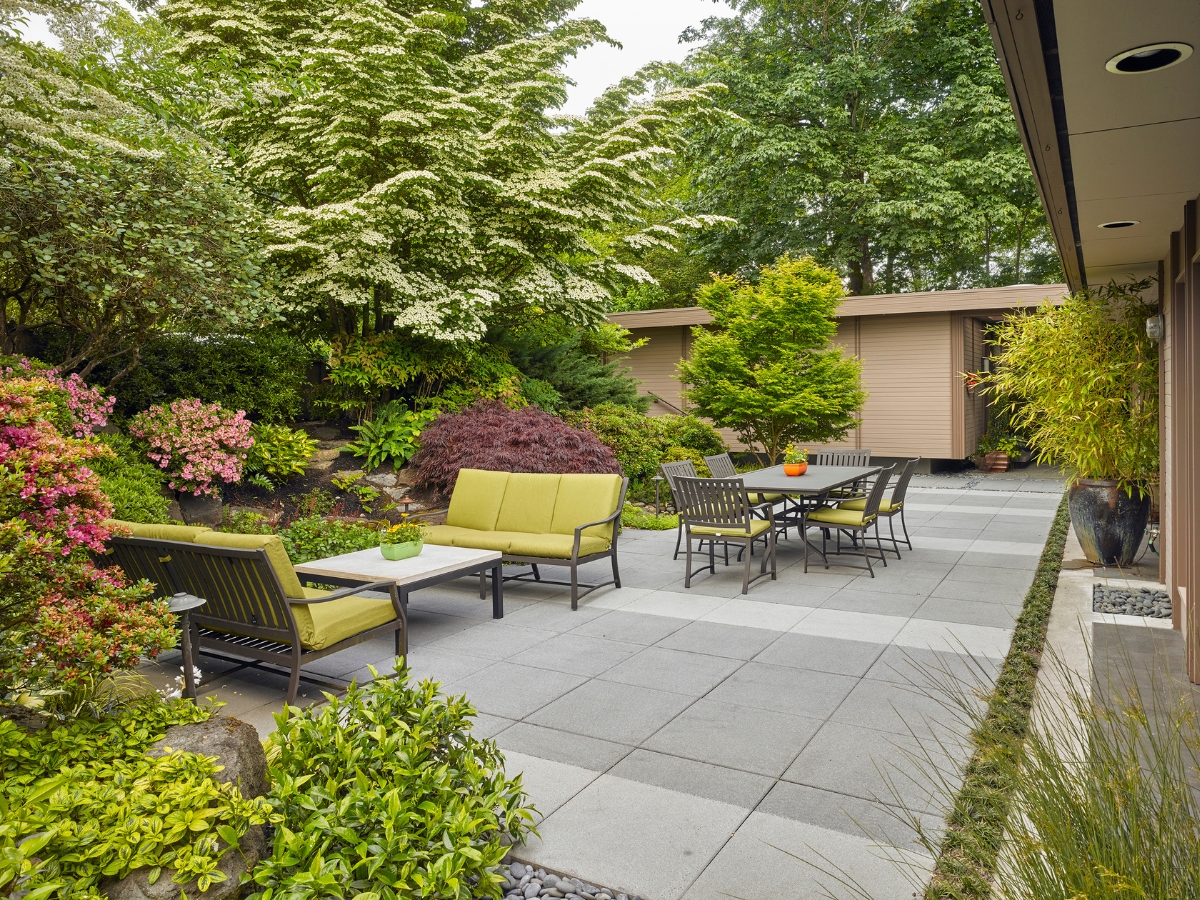Everyone has a coming of age story, but very few have a coming out story that sparks decades of exploration, deep reflection, and new declarations — beyond, of course, what feels palatable for others while living life in our global society. Yet, somehow Brooks Kolb has that very story as a man who embraced his sexuality, brilliance, and self at age 26 — opening the door to a life journey that is still unfolding every day. A writer, artist, landscape architect, and Thouron Alumni Scholar, this is the story of Brooks Kolb.
With much of his formative life spent in the Pacific Northwest of the United States, Brooks’ relationship with landscape architecture, writing, and creativity takes form through growing seasons, becoming evergreen — similar to beautiful and mighty Douglas-firs. His father was an architect who designed and built the home where Brooks, his brother Bliss, and mother would spend multiple decades creating and revisiting core memories.
“My father, Keith Kolb, was trained in architecture by Lionel Pries, whose life has been documented in Jeffrey Ochsner’s biography, Lionel N. Pries – Architect, Artist, Educator. My brother, Bliss, and I watched our father in action and, while we readily admitted that he was a talented architect and an excellent watercolorist, we felt that his tutelage under Pries, and later, Walter Gropius, had made him too single-minded in his devotion to Modernism,” Brooks reminisces.
Rather than see the world around him as ugly or messy, Brooks has chosen to view the world as beautiful and nonrestrictive. It is as though he took root in quality soil, grew a sustainable trunk, and sets out new branches and leaves every Spring.
Roots can, and should, shift as the seasons change
Brooks began his academic journey by starting his freshman year of university at the American College in Paris before heading back to the U.S. to study at the University of Pennsylvania. It was at Penn that Brooks completed his bachelor’s degree in history, graduating in 1974.
As is true for the majority of the Thouron community, Brooks leapt fully into academia by pursuing his master’s degree immediately following his time at Penn. The Thouron Award has made it possible for many British and American students to dream bigger than they ever imagined. For Brooks, it meant the chance to study abroad again and build a foundation that would later become core to his life’s work in landscape architecture.
“[It was a] terrific opportunity to study in England. At the time, I planned to obtain an MPhil degree in city planning,” Brooks shares. Instead he decided to study architectural history and urban design at the University College London’s School of Environmental Studies — which he completed in 1976. “The Thouron Award made my time abroad and brought me contacts and support I could never have imagined.
“[After my programme], I decided to return to Penn to study landscape architecture because it was not offered at UCL,” Brooks recalls. Though extending his studies in the U.K. did not pan out, he doesn’t doubt the impact and influence the Thouron Award had on his academic career. “It helped me get accepted into the [masters of landscape architecture] program at Penn and [to] perform well in the programme,” Brooks admits.
While studious and focused in his graduate programme, Brooks also became more comfortable exploring his artistic nature. One evening he and a group of grad students decided to listen, in its entirety, to an interpretation of “The Planets,” by Gustav Holst. “My extremely popular housemate, Ingrid, invited me to accompany her downstairs from our hovel of a student apartment in West Philadelphia to visit Marc, a med student who lived two floors below us. Marc passed a joint around, then he lowered the needle onto a record on his stereo. The record was Isao Tomita’s electronic interpretation of Holst’s ‘Planets.’”
It would be 40 years before Brooks would take paintings he created, inspired by Tomita’s interpretative work, pulled from an old Adidas shoebox, and produce them into a film called, Journey to the Planets — with the help of Adobe sound engineer, Matt Stegner.
A new world of wonder and much more awaited Brooks after graduating from Penn in 1979 — building a career and life, coming out and living unrestricted, creating more art, and stopping for introspection and reinvention later in life.

A trunk that bellows, but never breaks — no matter the season
Initially it seemed that Brooks would carry on to some relatable fashion in his father’s footsteps. Architecture was in Brooks’ DNA of a sort, and there was structured creativity he found with it. But something else was pulling its way to the surface too.
“My graduate studies in landscape architecture at the University of Pennsylvania led to a job working for two of my key professors, Bob Hanna and Laurie Olin,” Brooks shares. Present-day as a licensed landscape architect in Seattle, Washington, Brooks has honed his speciality in residential garden design with his business, Brooks Kolb LLC – Seattle Landscape Architecture. While his paintings and writings have always been there, they were not always at the forefront of his thoughts — much like every human living under capitalism, the question was: survive or create?
However, it wasn’t as though Brooks didn’t want to indulge the laissez-faire lifestyle often associated with artistic types. “As a child encouraged to draw and paint by my parents and grandparents, I assumed that I was destined for artistic triumphs. [However, I decided to] transmute my imagined masterpieces into works of landscape architecture,” Brooks acknowledges.
There was a greater piece of art Brooks was creating and it was ready to be shared with the world — whether he knew it beforehand or not. “Coming out of the closet is hard enough [and] building a new life as a gay man can prove even more challenging,” Brooks shares. Many members of often historically excluded communities in our society try to suppress their truth because it makes it seem easier to live among the homogeneity and business-as-usual mindsets.
“When I finally gained the courage to come out at age 26, my professional ambition and adventurous spirit clashed. One day I was designing landscapes for ‘80s rock-star architects, IM Pei and Partners, [then] the next, I boarded a plane to San Francisco in search of gay freedom,” recalls Brooks. Though living in San Francisco in the early ’80s and the bohemian mindset that came with that era, Brooks swayed between the practical and the artistic. “By then, I already had enough sense to choose making a steady living drawing landscape plans assigned by my boss over producing paintings of my own invention, hoping for an occasional sale,” Brooks confesses.
His search for a place in the gay community felt overwhelming and almost like an abstract notion. From lustful cruising, to falling in love with a Black factory-worker who later died of AIDS, to turning to writing, Brooks found that he had to construct his own morality and identity. It culminated in his forthcoming memoir, RAINBOW CATCHER: Coming Out / Coming of Age in the 1980s.
“RAINBOW CATCHER offers an expansive take on what it means to be gay from one whose generation lost so many to AIDS. [It also] includes chapters about my experience applying for the Thouron [Award] and studying in London,” shares Brooks. Thus far, an abridged chapter of RAINBOW CATCHER was published in “Interconnectedness,” the 2022 Anthology of Whatcom Writes; and another chapter took home first prize for nonfiction in the 2022 “Write on the Sound” literary contest.
With the twists and turns of the ‘80s, both in his journey as a gay man and as a pragmatic landscape architect, Brooks managed to push the envelope further than most with his professional achievements. “I like to think I chose the path less travelled by, but I wonder at times if the apprenticeship I experienced failed to bruise me enough to vault me to the rank of a master,” says Brooks with a twinkle.

The crown is its strongest when you truly are yourself
As time presses on, Brooks considers what value and impression he will have on the world in his new era of creativity. There are questions surrounding retirement and whether he has whatever it takes — whatever that means — to be celebrated as he now celebrates himself.
Retirement or not, he is motivated to slow down and actually enjoy life’s scenery on his way to whichever destination he is meant to find at the end of his journey. “Instead of retiring full stop, though, I’ve been dabbling in it. I’m working less here and there, and I’m experimenting with a new hobby called writing,” says Brooks.
Thankfully, there are reminders sprinkled across the intersections of his identities that serve to remind Brooks that he has been, and will continue to be, of influence in the world. “In my career, I’m proud of having my garden designs published in several magazines and one book. I’m also proud of my decades of pro-bono work advancing landscape architects and advocating for public parks — [having served as] a past-president of the Northern California Chapter of American Society of Landscape Architects; the Washington Chapter, ASLA; and the Friends of Seattle’s Olmsted Parks,” Brooks shares.
There are also his essays, which he publishes via a blog — ranging from deeply personal thoughts about selling the home his father built and loved dearly, what truly denotes objectification in our society, and reflecting on Malcolm X and religion. And, of course, there are his hobbies such as swimming, gardening, cycling, drawing, and serving as a founding member of the Volunteer Park Trust in Seattle. Nevertheless, Brooks won’t slow his ambition. “I want to be the person who reinvents himself; the person who uncovers a whole new horizon lying before him. Eager for a new lease-on-life, that ideal me is anxious to embrace a new outlet for my ever-present ambition,” explains Brooks.
As for the future of the Thouron Award, he hopes to see a focus on supporting diverse scholars. “I hope it [also] evolves in terms of selecting Black, Indigenous, and people of colour and trans candidates,” Brooks shares.
Are you interested in becoming a Thouron Scholar? Our application cycle for the 2024/2025 academic year will open in July 2023. Learn more about the Thouron Award — one of the most prestigious and generous academic scholarships in the world.

